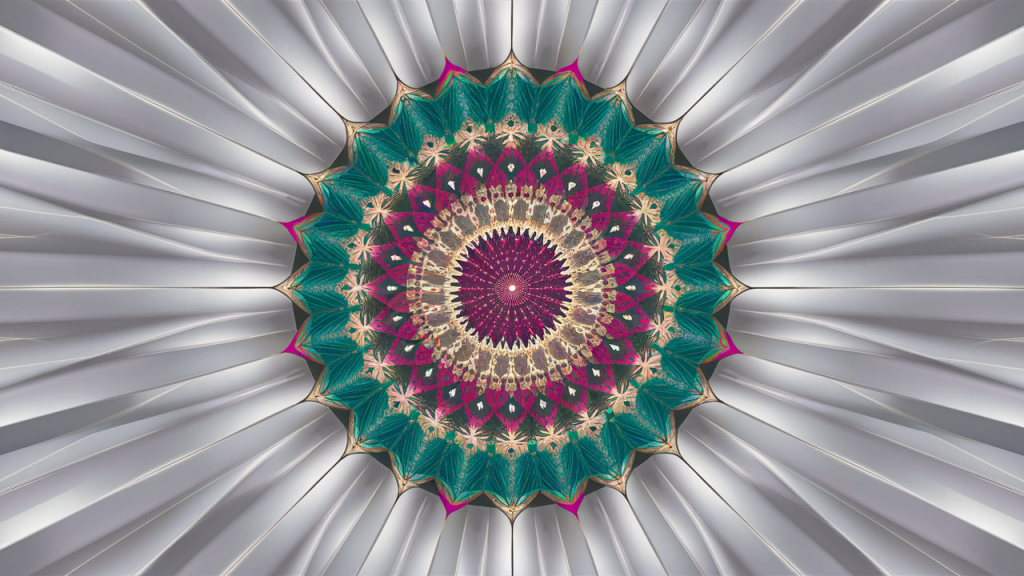Have you ever stared at a kaleidoscope and wondered how to create that mesmerizing effect yourself? You’re in the right place.
In this article, I’ll walk you through creating beautiful radial symmetry art step by step. If you’re a complete beginner or looking to enhance your skills, these techniques will help you create eye-catching designs that seem complex but are surprisingly simple to make.
I struggled with symmetry in my early art career, too. However, after years of practice and teaching hundreds of students, I’ve developed a foolproof method that works every time.
You’ll learn:
- The basic principles of radial symmetry
- Which tools work best (both digital and traditional)
- Simple techniques to create the perfect balance
- How to add color that enhances your design
Let’s transform those blank pages into stunning circular masterpieces that will impress everyone who sees them.
Understanding Radial Symmetry
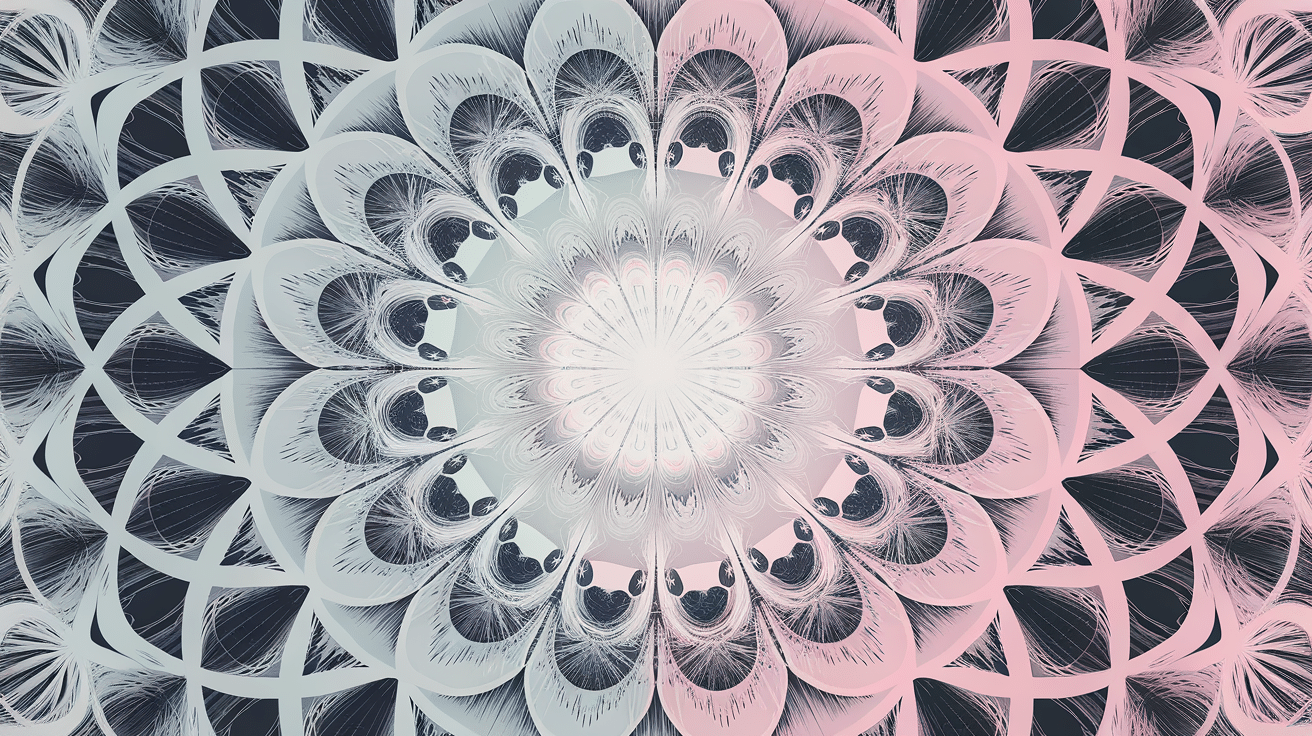
Radial symmetry is simpler than it sounds. Think of a bicycle wheel with spokes going out from the center. That’s radial symmetry in action!
I like to explain it this way: When something has the same pattern repeated around a center point—like a pizza cut into equal slices—that’s radial symmetry.
You see it everywhere in nature. Flowers, starfish, and snowflakes all use this design principle.
The key elements of radial symmetry include:
- A clear center point
- Patterns that repeat at regular intervals
- Equal balance in all directions
Have you ever drawn a perfect circle and wondered what to do next? Radial symmetry gives that circle purpose.
When creating radial art, think of your page as a clock. Each hour mark becomes a reference point for your pattern.
Sometimes, the most beautiful radial designs come from the simplest shapes. A triangle repeated twelve times around a center point creates something entirely new and fascinating.
Let nature inspire you. Look at flowers, sea creatures, or even the iris of an eye to see radial symmetry at work.
Techniques for Creating Radial Symmetry Art
These techniques will help you master the process, whether you’re working with drawing, painting, or digital art.
Basic Drawing Techniques
Starting with the right tools makes all the difference in creating clean, precise radial designs. A compass is your best friend for perfect circles. Place the metal point at your center and rotate to make your base circle.
Protractors help divide your circle into equal sections. For beginners, I recommend starting with just 4 or 8 divisions before attempting more complex patterns with 12 or 16 sections.
Templates save time if you create radial art often. You can make your own by drawing a circle and marking equal divisions around it, then use this as a base for future projects.
Guidelines are crucial for maintaining symmetry. Light pencil lines radiating from your center point act as roads for your design to follow. These can be erased later or incorporated into your final piece.
Incorporating Color and Pattern
Color brings radial designs to life! Start with a simple color scheme – perhaps analogous colors (neighbors on the color wheel) or complementary pairs for striking contrast.
For smooth transitions, try creating gradients that move from the center outward or around the circle. This adds a sense of movement to your piece.
Repeating patterns creates rhythm in your design. Try alternating simple elements like dots, lines, or small shapes along your guidelines for an instant professional look.
Varying line weight or shading can add depth. Darker elements appear closer while lighter ones recede, creating a three-dimensional effect even in flat designs.
Using Different Mediums
Each medium offers unique possibilities for radial art. Pencils provide precision and subtle shading, while fine-point pens create crisp, bold lines perfect for mandala-style designs.
Watercolors blend beautifully in radial patterns – try painting wet-into-wet for soft color transitions that maintain your symmetrical structure.
Digital tools offer endless experimentation without commitment. Most drawing programs have symmetry tools that automatically mirror your strokes, making the process faster and more precise.
Mixed-media approaches combine techniques for rich, textured results. For truly dimensional radial art, try outlining in pen, coloring with markers, and adding highlights with a white gel pen or gouache.
Inspiring Radial Symmetry Project Ideas
These project ideas will inspire you to explore this beautiful pattern in various creative ways, from art to home decor.
Mandalas and Zentangles
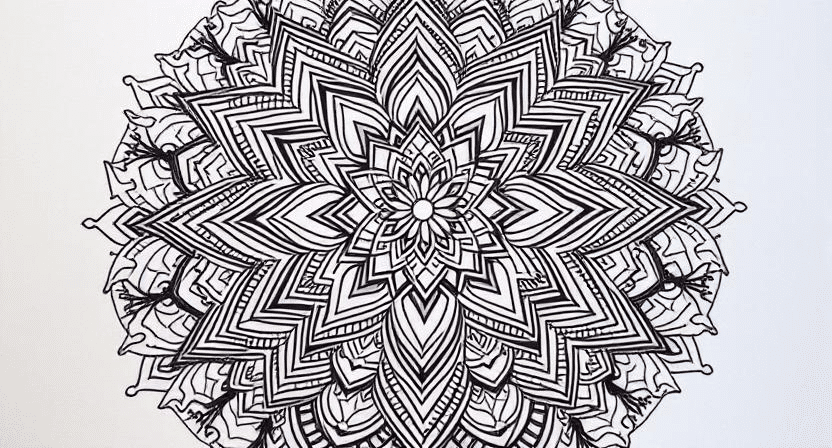
Mandalas aren’t just beautiful—they’re calming to create. Drawing these intricate circular designs is almost meditative. You can start with a simple circle divided into eight sections and build patterns from there.
Zentangles work perfectly with the radial design! These structured doodle patterns naturally flow around a center point.
Try creating a different tangle pattern in each “slice” of your circle while maintaining the same structure.
For beginners, I recommend starting with a small mandala (about 6 inches across) using a pencil first, then adding ink once you’re happy with the design. This gives you room to adjust as you go.
Symmetrical Collages
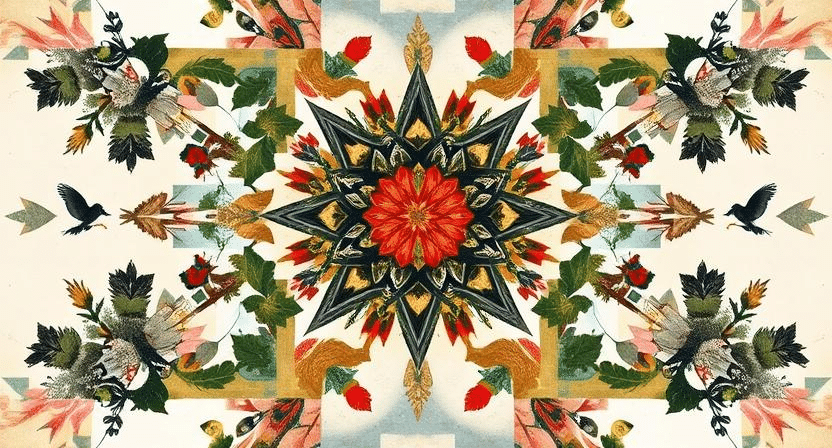
Paper collage brings texture to radial designs that drawing alone can’t achieve. Cut simple shapes like triangles or leaves from colored paper, then arrange them around your center point.
Old magazines provide endless color possibilities for free! Try cutting strips that gradually change in color, then arrange them radiating outward for a stunning gradient effect.
Fabric pieces work beautifully, too. Small scraps arranged in a circular pattern can become wall art or even a template for larger textile projects.
Nature-Inspired Radial Art

Nature offers perfect templates for radial designs. Press the flowers between the book pages, then arrange them in a circular pattern on paper or canvas.
Leaf printing creates natural radial patterns. Paint leaves, press them onto paper in a circular arrangement, and watch a beautiful symmetrical design emerge.
Seeds, small stones, or shells can be arranged in radial patterns and photographed from above for temporary natural art that you can document and enjoy without permanent mounting.
Digital Radial Symmetry

Digital tools make creating radial art incredibly accessible. Most drawing apps have symmetry tools that automatically mirror your strokes as you draw.
Phone apps let you transform everyday photos into radial designs. Try taking a picture of something textural, like tree bark or clouds, and then applying a radial filter.
For more control, design programs like Procreate or Adobe Illustrator let you create one section of your design, duplicate it, and rotate it precisely around a center point.
Textile Art with Symmetry
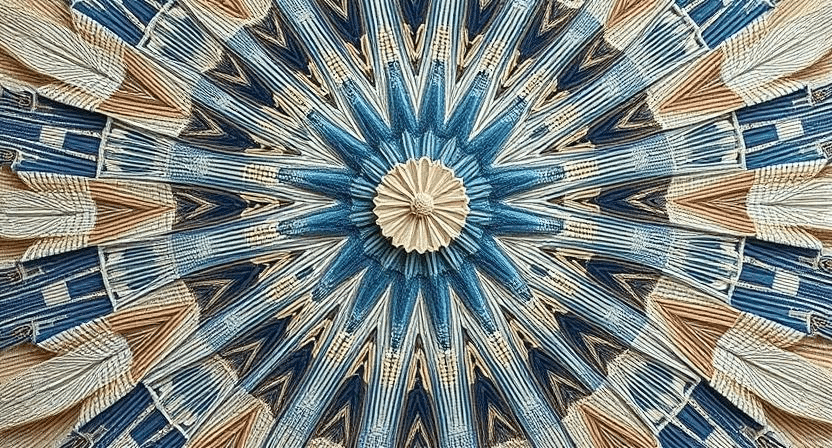
Embroidery hoops naturally frame circular designs. Try stitching a simple radial pattern using just a few basic embroidery stitches—even straight stitches radiating from the center create stunning results.
Quilting patterns based on radial designs create eye-catching pieces. To plan your fabric placement, start with a paper template divided into equal wedges.
Tie-dye creates natural radial patterns. Pinch the center of a fabric piece and apply rubber bands radiating outward before dyeing for a stunning sunburst effect.
Tips and Tricks for Success
Starting with Simple Designs Before Moving to Complex Patterns
Begin with basic shapes and simple divisions. Starting with a circle split into four or six sections can provide plenty to work with as a beginner. I began by creating simple star patterns, then gradually added more elements as my confidence grew.
Practicing Symmetry by Hand to Understand Balance and Proportion
Drawing symmetrical patterns by hand teaches you to feel the balance in your design. Even if you plan to use digital tools later, starting with pencil and paper builds essential understanding.
Try this exercise: divide a circle into 8 sections, then draw the same simple pattern in each section without using a template. This trains your eye and hand to work together.
Experimenting with Different Color Schemes and Materials to Enhance Visual Appeal
Color can transform a basic design into something spectacular. Try these approaches:
- Monochromatic: Different shades of one color for subtle elegance
- Complementary: Opposite colors on the color wheel for vibrant contrast
- Analogous: Neighboring colors for a harmonious flow
Materials create different effects even with the same design. A pattern drawn with fine-tipped markers creates crisp precision, while the same design in watercolor offers soft, blended transitions.
Layer materials for interesting results—try outlining with pen after applying color washes, or adding metallic gel pen highlights to colored pencil work.
Conclusion
Creating radial symmetry art opens a doorway to endless creative possibilities. As you practice these techniques and explore different projects, you’ll develop your unique style and approach.
The beauty of radial symmetry lies in its balance between structure and creativity—mathematical precision provides a framework, but your artistic choices bring it to life.
Whether you’re drawing mandalas for mindfulness, designing digital patterns, or crafting with textiles, the skills you’ve learned here will enhance your artistic journey.
Remember that perfection isn’t the goal; what matters most is the process of creation and the joy of expression.
Start with simple designs, embrace the learning curve, and watch as your confidence and abilities grow with each piece you create.
Your radial symmetry art journey is just beginning—enjoy every step along the way.
Frequently Asked Questions
What Tools Do I Absolutely Need to Start Creating Radial Symmetry Art?
You can start with just a pencil, some paper, and something round to trace, like a cup. While tools like a compass and ruler can help with precision, many beautiful designs begin with these basic supplies.
How Can I Fix Mistakes Without Starting Over Completely?
Small mistakes can often be integrated into your design as intentional variations. For larger errors, keep an eraser handy when working with a pencil. If using ink or paint, think about how you might transform the mistake into a new element or use a white gel pen or correction fluid to make adjustments.
Is Radial Symmetry Art Suitable for Children or Beginners with No Artistic Experience?
Absolutely! Simple radial designs are perfect for beginners of all ages. Starting with basic divisions—such as four or six sections—and using simple, repeating shapes is an excellent approach


